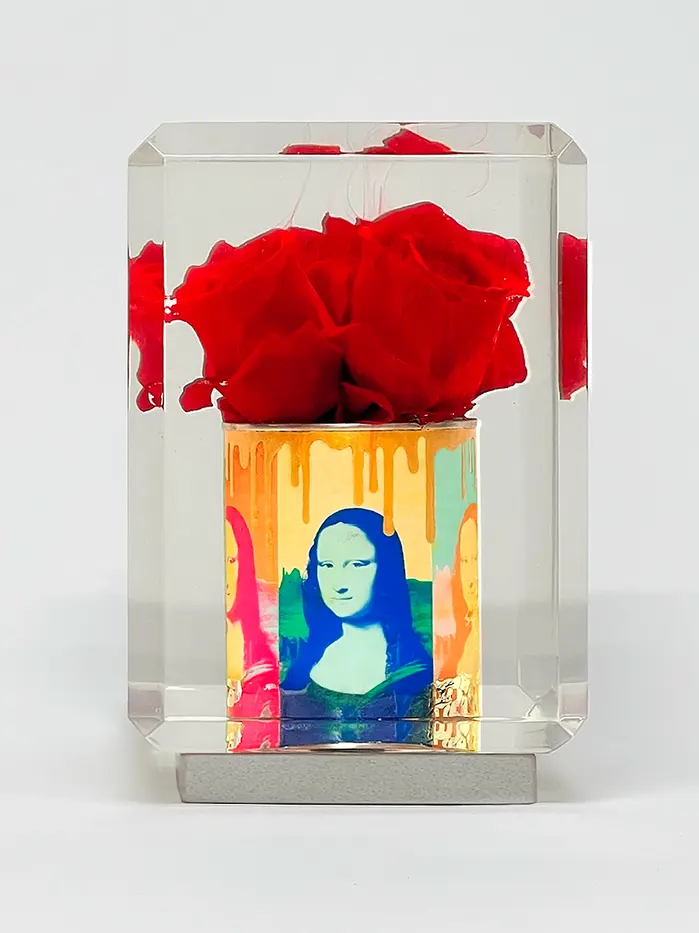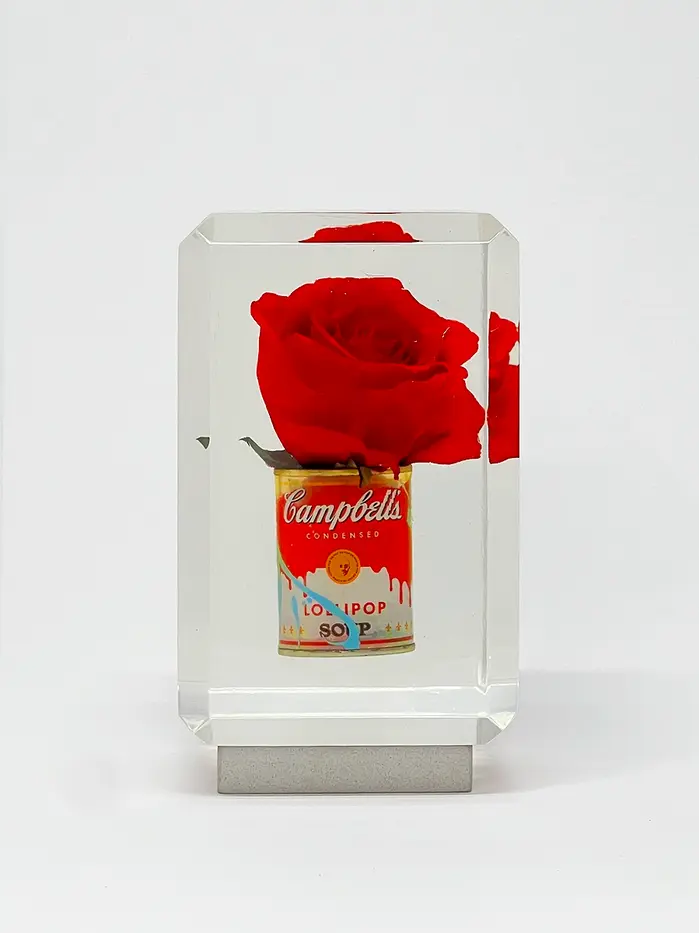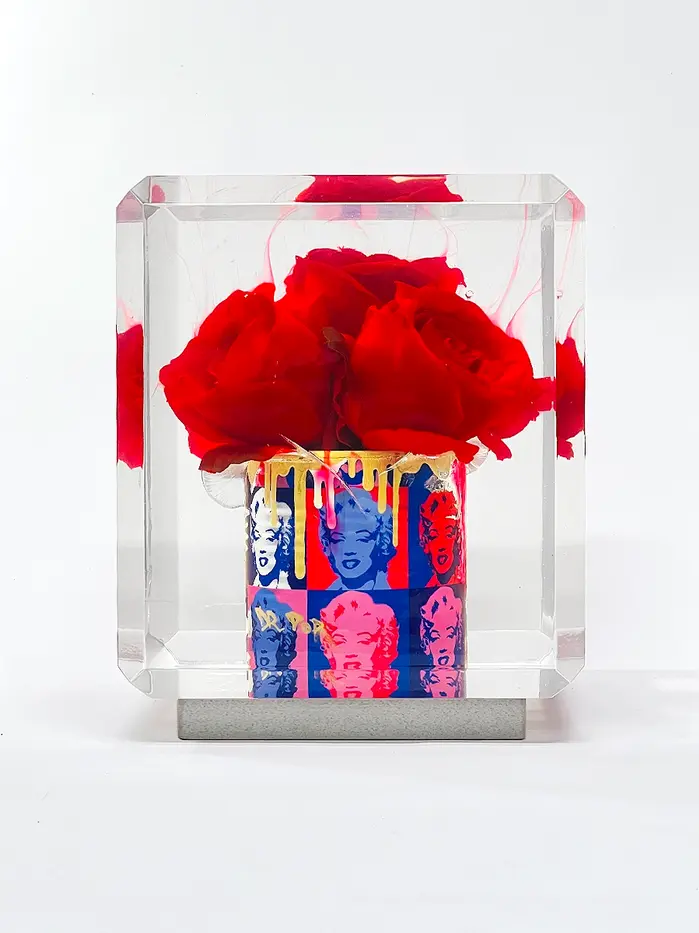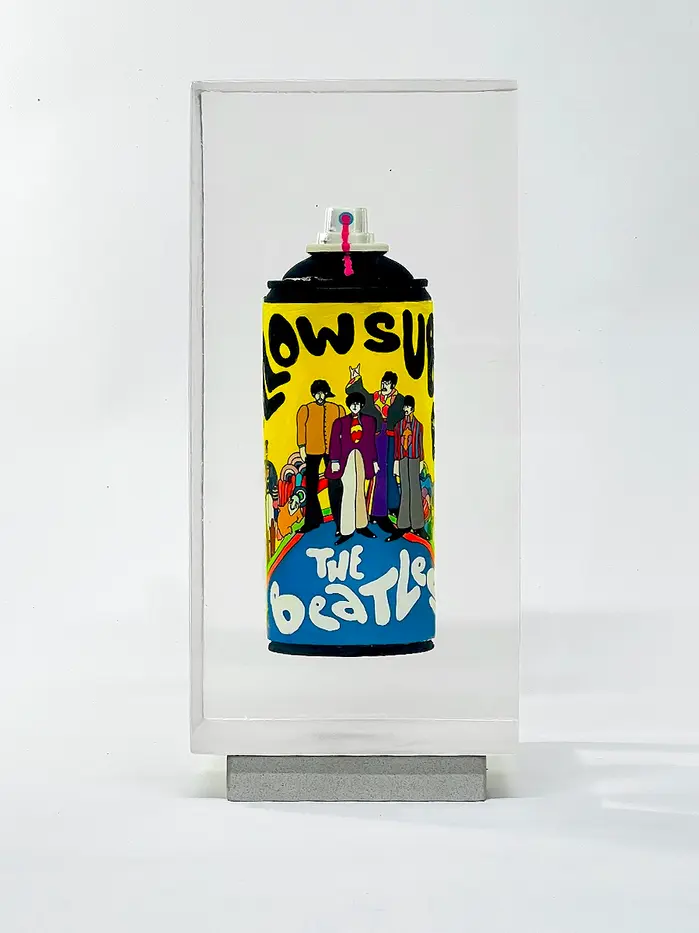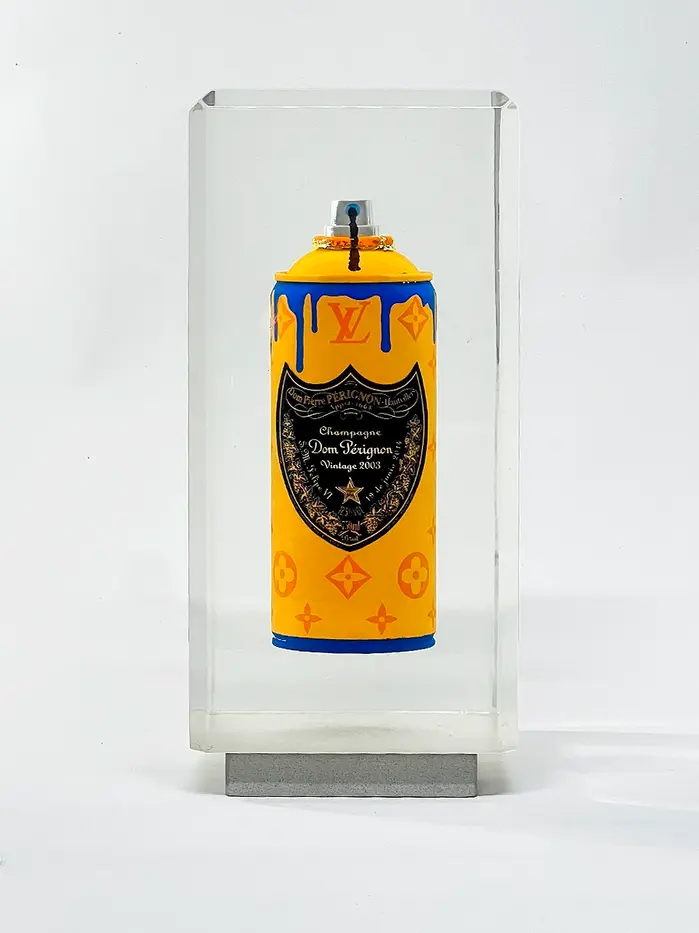Dr. Pop

Dr. Pop, born in 1989 in Paris to a family of designers, was immersed in design from a young age. This upbringing gave him an appreciation for the blend of creativity and functionality, shaping his artistic vision.
After studying design, Dr. Pop channeled his expertise into art critiquing consumerism, staying true to classic pop art traditions. Influenced by Andy Warhol and other pioneers, his work reinterprets iconic imagery to explore the complexities of modern consumer culture.
Pop art’s focus on elevating everyday objects into high art deeply attracted Dr. Pop. This movement, rooted in the 1950s and 1960s, blurred boundaries between high and mass culture using imagery from advertising, comics, and consumer goods. Inspired by this philosophy, Dr. Pop applies his design background and mastery of industrial materials, especially plastics, to create artworks blending pop culture and luxury symbols. These vibrant forms critique the fleeting allure of consumerism while preserving it in a timeless medium.
Dr. Pop’s dedication to technique is evident in each piece, for example with meticulous attention to preserving color and form within resin. Inspired by global influences, particularly Japanese aesthetics, he transforms everyday symbols into sculptures that challenge and elevate cultural themes. His evolving subjects push boundaries, blending street art roots with a refined, contemporary style. Today, Dr. Pop is celebrated for reimagining pop art, offering a modern critique of consumer culture through innovative techniques and materials.
Dr. Pop's artworks
Dr. Pop
Dr. Pop, born in 1989 in Paris to a family of designers, was immersed in design from a young age. This upbringing gave him an appreciation for the blend of creativity and functionality, shaping his artistic vision.
After studying design, Dr. Pop channeled his expertise into art critiquing consumerism, staying true to classic pop art traditions. Influenced by Andy Warhol and other pioneers, his work reinterprets iconic imagery to explore the complexities of modern consumer culture.
Pop art’s focus on elevating everyday objects into high art deeply attracted Dr. Pop. This movement, rooted in the 1950s and 1960s, blurred boundaries between high and mass culture using imagery from advertising, comics, and consumer goods. Inspired by this philosophy, Dr. Pop applies his design background and mastery of industrial materials, especially plastics, to create artworks blending pop culture and luxury symbols. These vibrant forms critique the fleeting allure of consumerism while preserving it in a timeless medium.
Dr. Pop’s dedication to technique is evident in each piece, for example with meticulous attention to preserving color and form within resin. Inspired by global influences, particularly Japanese aesthetics, he transforms everyday symbols into sculptures that challenge and elevate cultural themes. His evolving subjects push boundaries, blending street art roots with a refined, contemporary style. Today, Dr. Pop is celebrated for reimagining pop art, offering a modern critique of consumer culture through innovative techniques and materials.























